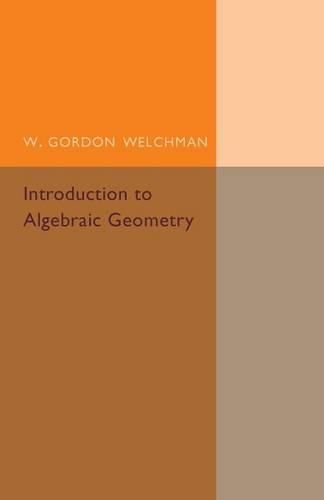Readings Newsletter
Become a Readings Member to make your shopping experience even easier.
Sign in or sign up for free!
You’re not far away from qualifying for FREE standard shipping within Australia
You’ve qualified for FREE standard shipping within Australia
The cart is loading…






Originally published in 1950 and written by the renowned mathematician, university professor, author and World War II codebreaker W. Gordon Welchman (1906-85), this textbook contains a treatment of projective geometry and provides a solid introduction to similar studies in space of more than two dimensions. The first three chapters analyse and establish the necessary foundations of the subject, whilst the remaining chapters are primarily concerned with the theory of conics, engaging with more complex topics such as metrical geometry, the application of matrix algebra, and invariants and covariants. The book also places much emphasis on the application of techniques rather than on the elementary principles of the subject and this is made easier by using algebraic foundations rather than purely geometrical axioms. This informative and insightful book will be of considerable value to scholars of mathematics as well as to anyone with an interest in the history of education.
$9.00 standard shipping within Australia
FREE standard shipping within Australia for orders over $100.00
Express & International shipping calculated at checkout
Originally published in 1950 and written by the renowned mathematician, university professor, author and World War II codebreaker W. Gordon Welchman (1906-85), this textbook contains a treatment of projective geometry and provides a solid introduction to similar studies in space of more than two dimensions. The first three chapters analyse and establish the necessary foundations of the subject, whilst the remaining chapters are primarily concerned with the theory of conics, engaging with more complex topics such as metrical geometry, the application of matrix algebra, and invariants and covariants. The book also places much emphasis on the application of techniques rather than on the elementary principles of the subject and this is made easier by using algebraic foundations rather than purely geometrical axioms. This informative and insightful book will be of considerable value to scholars of mathematics as well as to anyone with an interest in the history of education.